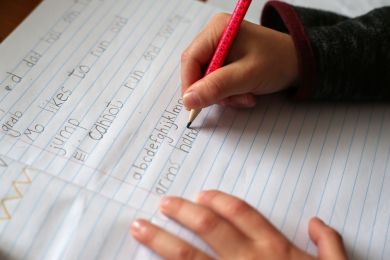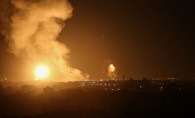One child dies every 11 seconds: Impact of drought in the Horn of Africa
One child dies every 11 seconds: Impact of drought in the Horn of Africa
The Horn of Africa is experiencing its worst drought in more than 40 years, extending across the East African region from Eritrea in the north through Ethiopia and Djibouti to the southern fringes of Kenya and Somalia.
According to United Nations reports, Africa is the continent most vulnerable to the effects of climate change, although it contributes only 4% of global carbon emissions.
More than 18 million people face severe hunger in Ethiopia, Somalia, and Kenya, according to the US government's Humanitarian Information Unit (HIU). The UN refugee agency UNHCR says that an estimated 1.5 million people have been displaced and around 7 million children are acutely malnourished.
The worst drought in 40 years
During four consecutive seasons, Somalia, Ethiopia, and Kenya suffered from severe climate change, desertification, and an escalation of the water crisis. This represents a threat to the lives of more than 18 million people.
The October-December 2020, March-May 2021, October-December 2021 and March-May 2022 seasons saw below-average rainfall. Vast swathes of Somalia, southeastern Ethiopia, and northern and eastern Kenya have been left facing the most severe drought in 40 years.
The rainy season from March to May 2022 is the driest on record, according to the United Nations Office for the Coordination of Humanitarian Affairs (OCHA).
The current rainy season is expected to be a historic fifth poor season, which will keep the need to secure food for communities in the Horn of Africa high until 2023. This in turn worsens food security and water scarcity, with more than 90% of Somalis already suffering from severe drought, according to the FAO's Somalia Water and Land Information Management (SWALIM) project.
Famine threatens the Horn of Africa
Drought and water scarcity threaten at least 18.4 million people with acute food insecurity and increasing malnutrition across Ethiopia, Kenya, and Somalia, according to the UN.
This number may rise to 20 million as the rainfall continues to decline.
According to the agricultural production adviser to the German Society for International Cooperation (GIZ) in Somalia, Abdelaziz Mohamed Ali, the drought wave and the reduction in rainfall periods in addition to the decline in the water level in the Juba and Shabelle rivers are all factors that led to the deterioration of agricultural land, the bankruptcy of many small farmers and the abandonment of agricultural work.
The Somali agricultural expert added to Jusoor Post that the decline in rainfall was reflected in the capacity of groundwater wells, which in turn witnessed a decrease and drought, negatively affecting the residents of areas that depend on groundwater.
“The drought threatens at least 7 million Somalis with acute food insecurity as of last July, including 918,000 displaced from their homes,” according to OCHA, while the Nairobi-based Africa Center for Strategies and Policies estimated “the number of internally displaced people at about 2.6 million Somalis since October 2020.”
There were 115,000 new displacement cases recorded in Somalia in June, with a monthly increase of 230%, including 113,000 cases caused by drought, according to the Protection and Return Monitoring Network led by the UN High Commissioner for Refugees(UNHCR).
Also, about 7.4 million people in Ethiopia and about 4.1 million in Kenya are severely food insecure due to drought.
Livestock losses affect children
Drought also cast a shadow on livestock. At least 7 million heads of livestock on which families depend for their livelihoods and sustenance died across the Horn of Africa, including more than 1.5 million in Kenya, between 2.1 million and 2.5 million in southern and southeastern Ethiopia, and 3 million in Somalia.
The decline in livestock has affected children's access to milk and thus their nutrition in Kenya, Somalia, Djibouti, and Ethiopia, where about 10 million children suffer from acute malnutrition in 2022, according to UNICEF.
The UN estimates that one child dies every 11 seconds from acute malnutrition.
Drought solutions
In order to confront drought in the Horn of Africa, Ali said that “governments, international institutions, and relief agencies must take a rapid response to drought-affected communities to avoid a humanitarian catastrophe.”
He added that this can be done “by prioritizing water-related issues, including the rehabilitation of infrastructure, the distribution of temporary water storage facilities, and water trucking and delivery to families.”
The Somali agricultural expert also called on the concerned authorities to “distribute animal feed to rural communities affected by drought to save livestock in the country.”
He also stressed “the necessity of prompt attention and work on the proper management of the existing limited water resources and maximizing the utilization of them in accordance with modern and advanced methods in this field.”
UNHCR has appealed for $42.6 million in urgent support to help displaced people, communities, and those affected by drought in Ethiopia, Kenya, and Somalia.
According to UNHCR, these funds will “help meet the immediate needs of just over 600,000 refugees in these countries as well as their host communities.”







